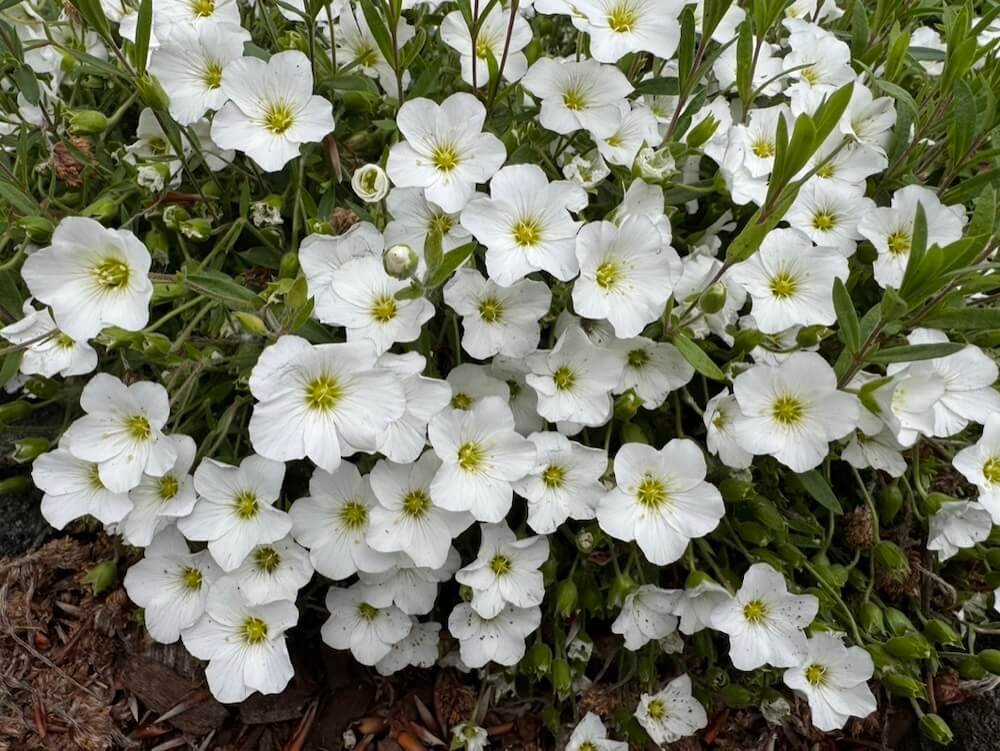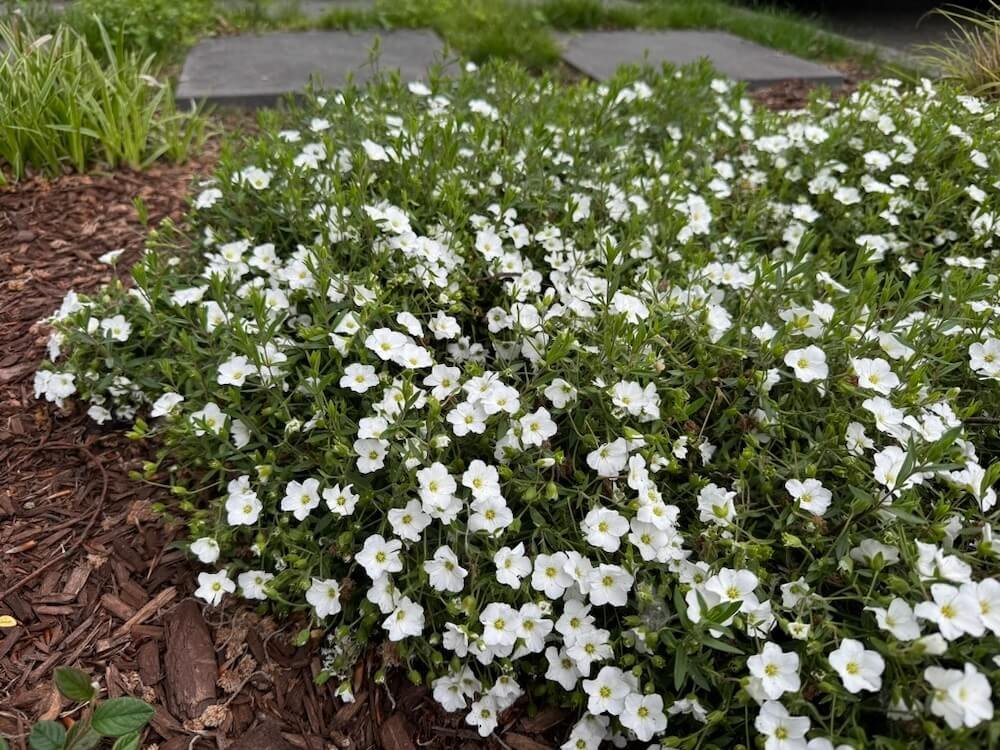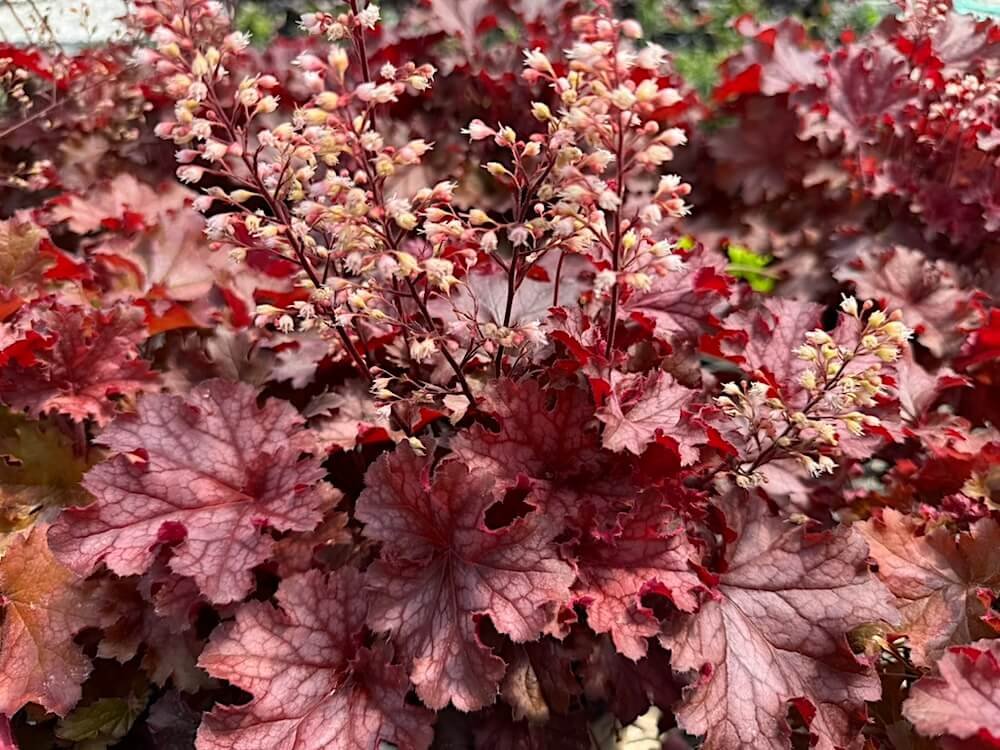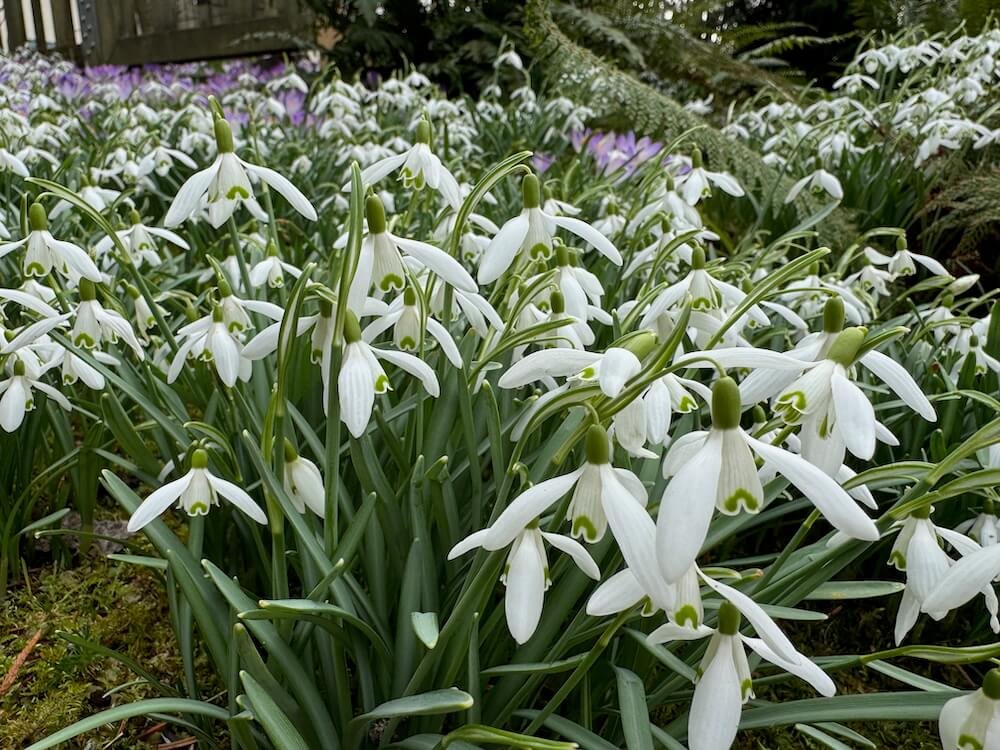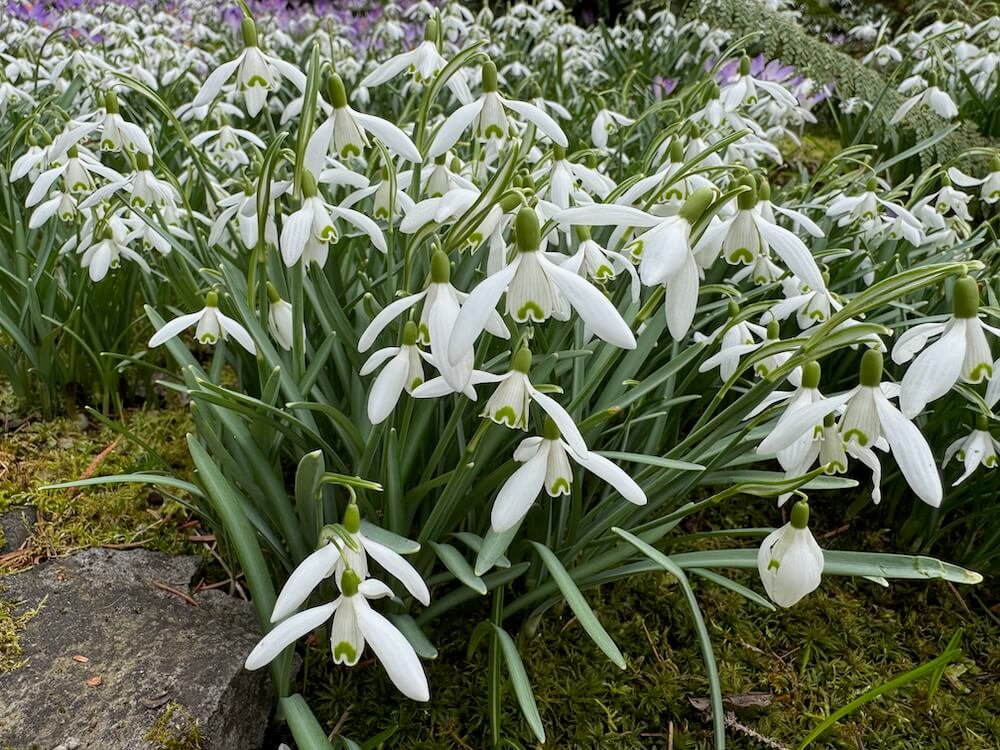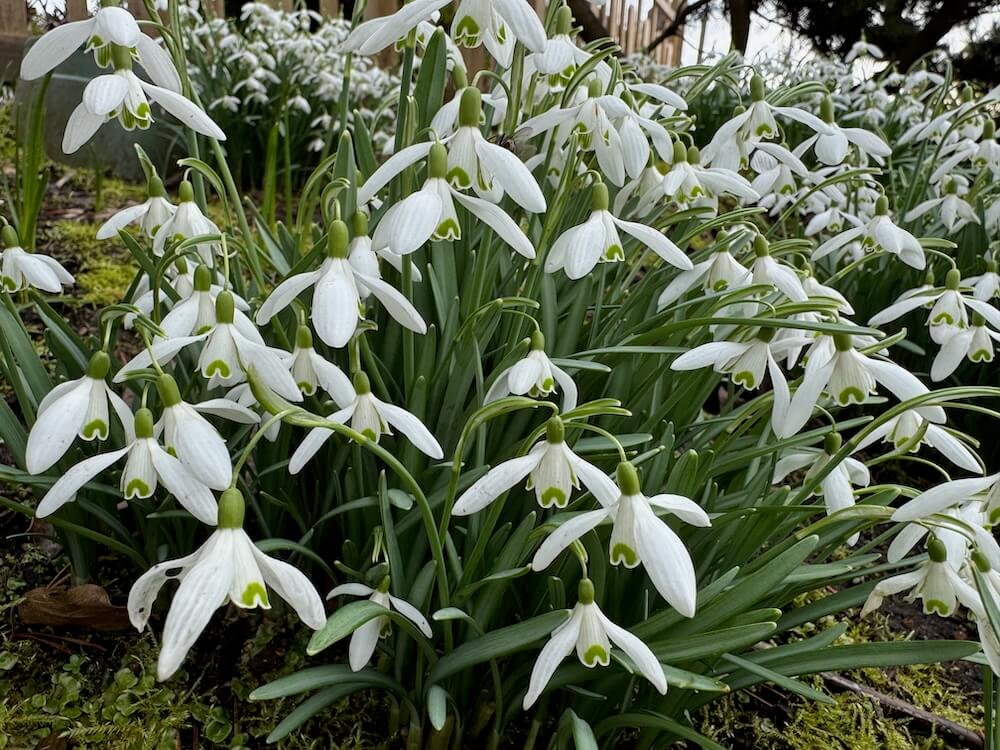DESCRIPTION
Arenaria montana, commonly known as Mountain Sandwort, is a charming, low-growing perennial known for its dense mats of evergreen foliage and a profusion of pure white, star-shaped flowers. Blooming in late spring to early summer, the delicate white flowers form a striking contrast against the dark green, narrow leaves, creating a carpet of blooms that adds a fresh, clean look to rock gardens, borders, or alpine settings.
Native to the mountainous regions of southern Europe, particularly the Pyrenees, Arenaria montana thrives in rocky, well-drained environments, making it an excellent choice for areas that mimic its native habitat. Its compact, spreading habit and abundant blooms make it popular in both traditional gardens and more naturalistic, alpine-inspired designs. The plant's resilience and ability to grow in challenging conditions have contributed to its longstanding appeal in ornamental gardening.
DESCRIPTION
Arenaria montana, commonly known as Mountain Sandwort, is a charming, low-growing perennial known for its dense mats of evergreen foliage and a profusion of pure white, star-shaped flowers. Blooming in late spring to early summer, the delicate white flowers form a striking contrast against the dark green, narrow leaves, creating a carpet of blooms that adds a fresh, clean look to rock gardens, borders, or alpine settings.
Native to the mountainous regions of southern Europe, particularly the Pyrenees, Arenaria montana thrives in rocky, well-drained environments, making it an excellent choice for areas that mimic its native habitat. Its compact, spreading habit and abundant blooms make it popular in both traditional gardens and more naturalistic, alpine-inspired designs. The plant's resilience and ability to grow in challenging conditions have contributed to its longstanding appeal in ornamental gardening.

